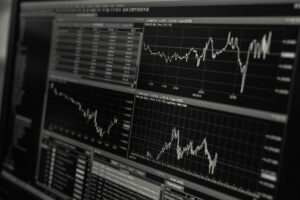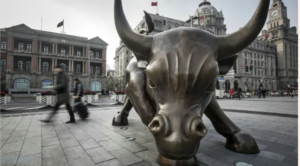Resume af teksten:
Den franske industriproduktion faldt med 0,7% i august måned, men ligger stadig over maj-niveauet, hvilket indikerer en positiv tendens trods fortsat svag indenlandsk efterspørgsel og usikkerhed. Især luft- og rumfartssektoren har oplevet volatilitet, hvilket påvirkede outputtet. Trods udsving er industrien 1,1% højere end gennemsnittet for årets første fem måneder, hvilket er moderat positivt. Den indenlandske efterspørgsel er dog svag, med forbrugertilfredshed og husholdningernes forbrug stadig under pres. Den økonomiske vækst kan stagnere mod slutningen af året, og budgetudfordringer truer med at skabe en usikker politisk atmosfære. Premierminister Sébastien Lecornu forudser en lavere vækst for 2026, hvilket komplicerer det økonomiske landskab yderligere.
Fra ING:
French industrial output declined in August, yet remains above its May level, suggesting that the broader trend is still positive, at least for now. However, persistent weakness in domestic demand and elevated uncertainty continue to weigh on recovery

France’s aerospace sector has been volatile. PM Lecornu visited a site in Normandy in June
A misleading decline
Manufacturing output in France fell by 0.7% month-on-month in August, according to the latest data from Insee. While this drop may raise concerns, it should be viewed in context. July’s figures were revised upward, from an initially reported -1.7% to -0.5%, and overall activity remains above May levels.
Much of the recent volatility stems from the aerospace and space sectors. After a sharp surge in June (with ‘other transport equipment’ production jumping 17.3% month-on-month), production normalised in July and August. This swing has mechanically dragged down headline figures following June’s spike.
Fragile growth
Despite recent fluctuations, French industry is trending higher than earlier in the year, up 1.1% compared to the average of the first five months. This offers a modestly positive signal amid a subdued global backdrop. Still, the outlook remains mixed. While GDP is likely to have expanded in the third quarter of 2025, risks are mounting for the year-end.
Domestic demand remains anaemic. Household spending on goods was basically flat in August, edging up just 0.1% after a sharper-than-expected 0.6% decline in July. This lethargy persists despite low inflation (1.2% in September) and relatively strong purchasing power gains compared to other European economies. Political uncertainty, fears of tax hikes, and concerns over unemployment are eroding consumer confidence, prompting households to save more. The savings rate hit a record 18.9% in 2Q, and we expect it to remain elevated, further dampening consumption and undermining hopes for a near-term rebound.
Budget complications ahead
Even if industrial production holds up, growth may stagnate in the fourth quarter, leaving France on a weak footing heading into 2026. This complicates the fiscal outlook. Prime Minister Sébastien Lecornu recently acknowledged the deteriorating environment, revising the 2026 growth forecast down to 1% from 1.2%. That may still be too optimistic. We expect just 0.8% growth in 2026, following 0.6% in 2025. Under these conditions, passing a fully-fledged budget in Parliament this year looks increasingly unlikely, and political and economic uncertainty may persist well into next year.
Hurtige nyheder er stadig i beta-fasen, og fejl kan derfor forekomme.



